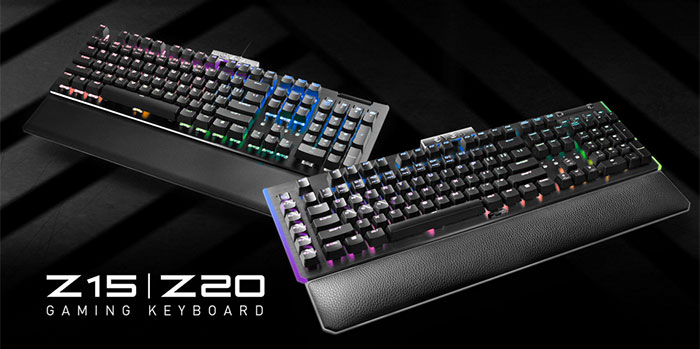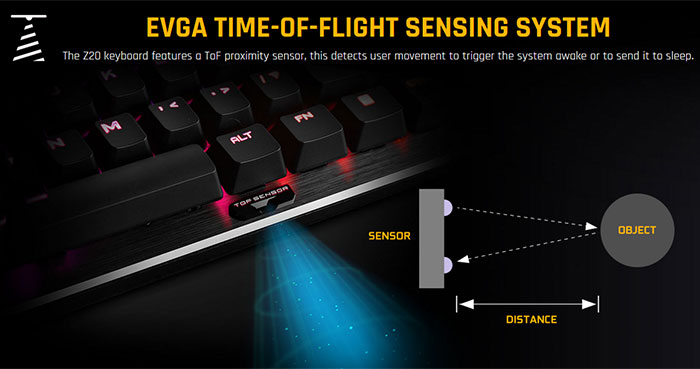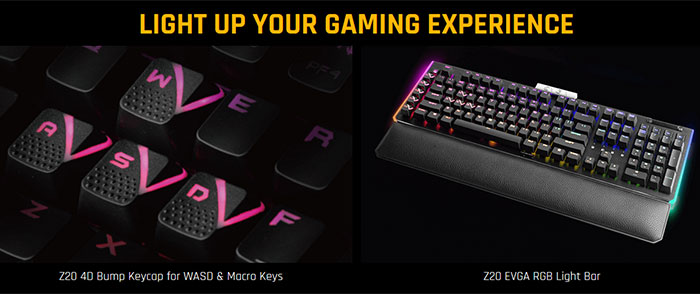EVGA has just launched a barrage of new input peripherals PC gaming. The new offerings are the EVGA Z20/Z15 Series gaming keyboards, and EVGA X20/X17/X15 gaming mice.

I noticed EVGA tease these new mechanical gaming keyboards recently, ahead of this news, by showing a close-up of one of the newest features present – a time-of-flight sensing system installed on the mid-front edge f the keyboard frame. The TOF sensor is actually only present in the Z20, and is used for determining the user's proximity and thus waking or sleeping the PC system. Who thinks this is a good feature for a gaming keyboard?

A shared feature of the Z20 and Z15 keyboards is the internal 32-bit Arm Cortex-M33 core microprocessor, designed to support a 4K Hz report rate. EVGA says this implementation is 4x faster than a standard keyboard and will be more responsive, with inputs more precise. Other commonalities are the per key RGB LED lighting, and easy access media controls including the volume roller.
|
EVGA Z20 |
EVGA Z15 |
|
Switch
Design
Micro Processor
|
Switch
Design
Micro Processor
|
Above you can see the specs of the two keyboards compared. As well as the aforementioned TOF sensor, the Z20 sets itself apart with the use of optomechanical switches. These are said to be faster and more durable than traditional mechanical switches. EVGA uses Light Strike LK Optical Mechanical switches with a low 1.5 mm travel to actuation, generating 25 per cent faster response time compared to traditional mechanical switches. Buyers also have a choice of linear or clicky response with these switches – whichever they choose they get te same benefits of very fast debounce and super-long operating life.

The EVGA Z20 (US$174.99) is further differentiated with its dedicated Macro keys – you can see these down the left hand side and they feature special RGB slice highlights, as do the WASD keys. In close-ups, and if you bought one of these, you will notice these same highlighted keys feature a textured surface, this is what EVGA calls a 4D bump keycap.
The package is rounded off with a sizable leather texture wrist rest. It looks like both new keyboards come with this accessory.
Major differences with the EVGA Z15 (US$129.99)are its choice of traditional mechanical keys from Kailh, the lack of the dedicated macro keys and 4D bump keycaps. Additionally, the Z15 doesn't feature a lightbar surround.

EVGA also launched a trio of new gaming mice. The higher-end pair, the X17 and X15 both feature a 32-bit Arm Cortex-M33 processor which is capable of 8KHz report rate and 0.125ms response time. These are claimed to be the world's first triple sensor mice with dual LOD sensors, paired with a Pixart 3335 optical sensor on the X20 or Pixart 3389 on the X17. You can read more about the mice via the link in the intro and the individual product pages. The new X17 costs US$79.99, and the X20 is US$119.99. Pricing and availability for the X15 is yet to be revealed, but it is said to be 'coming soon'.






